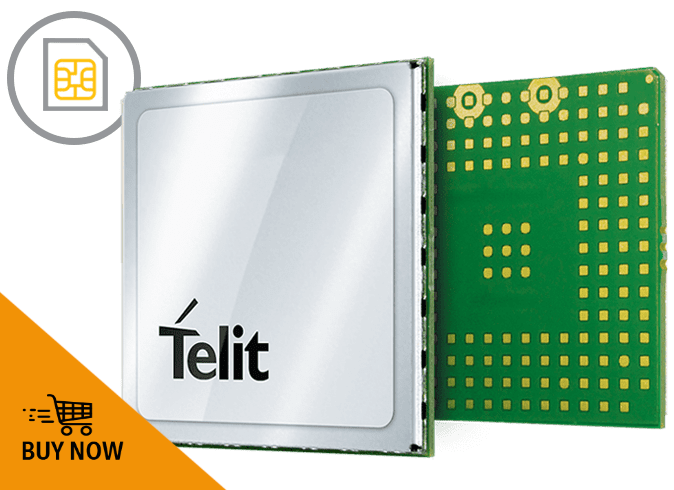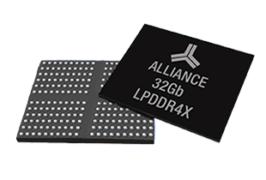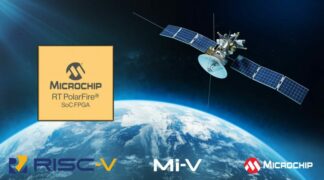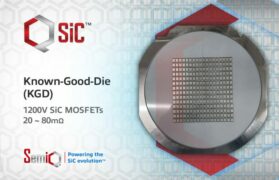Long-distance connectivity for the Internet-of-Things (IoT)
Connectivity is one of the most important attributes in our modern world and, for long-range connectivity, cellular technology is the preferred option. For IoT devices, low-power operation is a key requisite, making LTE-based NB1 and M1 categories increasingly popular. This is a rapidly growing market with over 100 million devices being added annually, according to analysts Berg Insight. The technology continues to evolve with embedded SIM solutions replacing traditional SIM cards in many applications.
By Sarah Brucker, Product Sales Manager Wireless, Rutronik
The needs of IoT devices, in terms of cellular connectivity, are very different to those of mobile phones. As a result, simpler versions of Long-Term Evolution (LTE) have been developed including NB-IoT (Narrowband IoT), sometimes referred to as NB1, and also LTE-M1, also known as ‘M1’. Simpler and designed to transmit smaller data packets, these standards use less power than full cellular standards and occupy a smaller frequency spectrum while retaining a range of several kilometres – and the ability to penetrate buildings. LTE-M has peak uplink / downlink values around 300 kbit/s and is capable of transmitting at up to 23 dBm while NB-IoT is typically in the region of 30-60 kbit/s at a comparable transmission rate. The development of both of these standards has opened up a variety of new applications for IoT devices.
Existing networks provide the backbone
One of the biggest advantages of LTE-M and NB-IoT is that, as they are derived from LTE standards, they are able to use existing LTE network infrastructure. This gives access to data transmission that is both robust and secure and, as the LTE network expands, permits mobile devices to roam globally in the same way a smartphone can. The infrastructure is provided (and expanded) by mobile network operators (MNOs) to meet the needs in each region. As the IoT-focussed standards have excellent range (NB-IoT is seven times longer than standard LTE, and LTE-M is four times longer), the coverage in all regions is already excellent – and improving.
Accessing the cloud from remote places is now possible
From a technical perspective, there are other advantages to NB-IoT and LTE-M. The associated power supplies are simpler as, unlike GPRS, there is no need to be able to support 2A current peaks. Also, the enhanced range means that 2G-fallback is completely unnecessary, which brings further simplicity. This, along with low cost modules and the ease of connection due to widely-available infrastructure, means that NB-IoT and LTE-M are the preferred choice over other long-range technologies. NB-IoT is generally preferred for fixed location installations while the faster data rate of LTE-M makes it more popular in mobile applications.
The IoT is quite unique in its data needs in that it requires small packets of data to be transmitted on an occasional basis. For example, it is not necessary for an ambient temperature sensor or a soil pH sensor to transmit frequently as the parameter being measured cannot change that quickly. The challenge with IoT applications is that the sensing nodes are often placed in out-of-the-way places such as remote fields, inside building infrastructure such as air ducts or within remotely-located cabinets. This is where NB1 and M1 come in.
The connectivity and range of sensing capabilities now allows engineers to imagine applications that would have not been possible before in areas including smart metering, infrastructure, agriculture, forestry, transport, logistics and maintenance. Utility companies can now receive metering information directly without the cost and inconvenience of meter readers while maintenance companies can monitor machines remotely and schedule predictive maintenance accordingly.
Technology to support NB-IoT
But what technology is available to support NB1 and M1? Nordic Semiconductor has been involved in low-power wireless for some time. Their latest product, the nRF91 series, is a multi-mode system-in-package (SiP) based on an ARM Cortex M33 microcontroller for NB-IoT and LTE-M. The nRF91 searches for NB-IoT and / or LTE-M networks automatically and can switch easily between the two. ARM TrustZone® and ARM CryptoCell provide security for storage while the data transmission is encrypted and protected by TLS and SSL. Over-the-air updates allow designers to address coding issues and provide additional functionality while the system is deployed in the field.
The SiP is available with assisted GPS and, even with this feature, is available in a tiny 10 mm x 16 mm x 1.2 mm package. This is ideal for space-constrained IoT applications as it is one of the smallest devices available, occupying one-fifth of the volume of comparable NB-IoT / LTE-M modules coupled with a GNSS module. The capable M33 processor allows data to be processed locally at the edge, keeping data traffic to a minimum, thereby conserving energy. Nordic Semiconductor also provide a software development kit (nRF91-SDK) with a full suite of common stacks including MQTT, CoAP, http, LWM2M, IPv4, IPv6, DTLS, TLS, and TCP. The fully-integrated SiP is fully integrated with all necessary passive components included. In fact, the only required external device is a single-ended 50Ω line to act as an antenna. 32 GPIO lines allow for the connection of peripherals including LEDs, switches, relays and sensors.
SIM-less data transmission
Another important development that is associated with long-range connectivity for the IoT is the ability to send and receive data without a SIM card. Until recently, it was a requirement to have a physical SIM card and SIM card holder to send or receive cellular data. However, recent developments have changed this. ‘Embedded-SIM’ solutions including the new integrated universal integrated circuit card (iUICC) not only save PCB space and remove the need for a SIM card holder. They also make it unnecessary to swap SIM cards when changing providers as they can be controlled and updated remotely.
One supplier of these iUICC embeddedSIM solutions is Telit. Their sim-WISE products are 2G wireless modules that cover LTE-M and NB-IoT – one example being the ME910C1 combi module that covers both standards. Telit’s simWISE modules are complemented by an IoT cloud platform that allows development of fully customisable cloud solutions.











